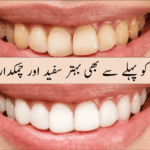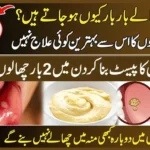A bright, white smile is often associated with good health and hygiene. While many people turn to commercial teeth-whitening products, these options can be expensive and sometimes contain harsh chemicals that may damage your enamel or cause sensitivity. Fortunately, there are several natural remedies you can use at home to help whiten your teeth safely and effectively. In this article, we will explore various natural methods to achieve a brighter smile and maintain good oral health.
1. Baking Soda and Hydrogen Peroxide Paste
Baking soda is a popular natural remedy for teeth whitening due to its mild abrasive properties, which can help remove surface stains from the teeth. Hydrogen peroxide is a natural bleaching agent that is commonly found in many commercial teeth-whitening products. When combined, these two ingredients create a powerful paste that can effectively whiten your teeth.
A bright, white smile is often associated with good health and hygiene. While many people turn to commercial teeth-whitening products, these options can be expensive and sometimes contain harsh chemicals that may damage your enamel or cause sensitivity. Fortunately, there are several natural remedies you can use at home to help whiten your teeth safely and effectively. In this article, we will explore various natural methods to achieve a brighter smile and maintain good oral health.
1. Baking Soda and Hydrogen Peroxide Paste
Baking soda is a popular natural remedy for teeth whitening due to its mild abrasive properties, which can help remove surface stains from the teeth. Hydrogen peroxide is a natural bleaching agent that is commonly found in many commercial teeth-whitening products. When combined, these two ingredients create a powerful paste that can effectively whiten your teeth.
Why It Works:
- Abrasive Action of Baking Soda: Baking soda gently scrubs away surface stains on the teeth without damaging the enamel.
- Bleaching Effect of Hydrogen Peroxide: Hydrogen peroxide helps break down the molecules causing discoloration, making teeth appear whiter.
How to Use:
- Mix a small amount of baking soda with a few drops of hydrogen peroxide to form a paste.
- Use a toothbrush to apply the paste to your teeth.
- Gently brush your teeth for 1-2 minutes, focusing on areas with stains.
- Rinse your mouth thoroughly with water to remove any residue.
- Use this remedy once or twice a week to avoid damaging the enamel.
Scientific Evidence: A study published in the Journal of Clinical Dentistry found that toothpaste containing baking soda was significantly more effective at removing plaque and whitening teeth than toothpaste without baking soda.
2. Oil Pulling with Coconut Oil
Oil pulling is an ancient Ayurvedic practice that involves swishing oil in your mouth to remove bacteria and promote oral health. Coconut oil is a popular choice for oil pulling due to its pleasant taste and antibacterial properties. Oil pulling with coconut oil may help reduce plaque buildup, prevent cavities, and whiten teeth over time.
Why It Works:
- Antibacterial Properties: Coconut oil contains lauric acid, which has antibacterial properties that help reduce harmful bacteria in the mouth.
- Prevents Plaque Buildup: Regular oil pulling can help reduce plaque buildup and prevent stains caused by bacterial growth.
How to Use:
- Take a tablespoon of coconut oil and swish it around in your mouth for 15-20 minutes.
- Spit the oil into a trash can (not the sink, as it can clog drains).
- Rinse your mouth with water and brush your teeth as usual.
- Practice oil pulling 3-4 times a week for best results.
Scientific Evidence: A study published in the Journal of Contemporary Dental Practice found that oil pulling with coconut oil significantly reduced plaque formation and gingivitis, suggesting its effectiveness in maintaining oral health.
3. Apple Cider Vinegar Rinse
Apple cider vinegar (ACV) is a natural disinfectant and cleaning agent that can help remove stains from teeth due to its acidic properties. It is also effective in killing bacteria in the mouth, which can contribute to plaque buildup and discoloration.
Why It Works:
- Natural Acidic Properties: The acetic acid in apple cider vinegar helps break down plaque and remove surface stains from teeth.
- Antibacterial Effect: ACV helps kill harmful bacteria in the mouth, preventing bad breath and promoting oral hygiene.
How to Use:
- Dilute one tablespoon of apple cider vinegar with one cup of water.
- Swish the solution in your mouth for about 30 seconds to one minute.
- Spit it out and rinse your mouth thoroughly with water to prevent the acid from damaging your enamel.
- Use this rinse a few times a week, but avoid overuse as the acid can erode tooth enamel.
Scientific Evidence: Research published in the Journal of Natural Science, Biology, and Medicine highlights that while apple cider vinegar can help whiten teeth, it should be used cautiously due to its acidic nature, which can erode tooth enamel if overused.
4. Activated Charcoal
Activated charcoal is a highly absorbent substance that is often used to trap toxins in the body. It can also be used as a natural teeth-whitening remedy due to its ability to absorb plaque and other substances that stain teeth.
Why It Works:
- Absorptive Properties: Activated charcoal binds to toxins and surface stains, helping to remove them from the teeth.
- Non-Abrasive Whitening: Unlike some commercial whitening products, activated charcoal is non-abrasive and does not harm the enamel.
How to Use:
- Wet your toothbrush and dip it into activated charcoal powder.
- Brush your teeth gently for 2-3 minutes, focusing on stained areas.
- Rinse your mouth thoroughly with water until the charcoal is completely washed away.
- Use this remedy once or twice a week to avoid damaging the enamel.
Scientific Evidence: While there is limited scientific research specifically on the effectiveness of activated charcoal for teeth whitening, anecdotal evidence and its popularity suggest it can help remove surface stains. However, it is important to use it cautiously to avoid enamel damage.
5. Strawberry and Baking Soda Mixture
Strawberries contain malic acid, a natural enzyme that can help remove surface stains on teeth. When combined with baking soda, strawberries can create a natural whitening paste that is both effective and gentle on enamel.
Why It Works:
- Malic Acid in Strawberries: Malic acid acts as a natural astringent that helps remove surface discoloration.
- Mild Abrasive of Baking Soda: Baking soda helps scrub away surface stains without damaging the enamel.
How to Use:
- Mash one ripe strawberry and mix it with half a teaspoon of baking soda.
- Apply the mixture to your teeth using a toothbrush or your fingers.
- Leave it on for about 5 minutes, then rinse your mouth thoroughly.
- Brush your teeth with regular toothpaste to remove any residue.
- Use this remedy once a week to prevent enamel erosion.
Scientific Evidence: A study published in the Journal of Dentistry found that while strawberries combined with baking soda can produce visible whitening effects, the results are not as significant as professional whitening treatments. However, it remains a safe and natural alternative.
6. Lemon Juice and Baking Soda Paste
Lemon juice is a natural bleaching agent due to its high acidity and vitamin C content. When combined with baking soda, it can help remove surface stains and whiten teeth. However, due to its acidic nature, it should be used sparingly to avoid damaging the enamel.
Why It Works:
- Natural Bleaching Agent: The citric acid in lemon juice helps break down stains on the teeth, making them appear whiter.
- Baking Soda’s Abrasive Properties: Baking soda helps scrub away surface stains without harming the enamel.
How to Use:
- Mix a small amount of lemon juice with half a teaspoon of baking soda to form a paste.
- Apply the paste to your teeth using a toothbrush.
- Leave it on for 1-2 minutes, then rinse your mouth thoroughly with water.
- Brush your teeth with regular toothpaste to remove any residue.
- Use this remedy once every two weeks to avoid enamel erosion.
Scientific Evidence: While lemon juice has natural bleaching properties, dental experts caution against frequent use due to the risk of enamel erosion from its acidic content.
7. Eating Crunchy Fruits and Vegetables
Eating crunchy fruits and vegetables like apples, carrots, and celery can help remove plaque and surface stains from teeth. These foods act as natural abrasives, scrubbing away particles that can cause discoloration.
Why It Works:
- Natural Scrubbing Action: Crunchy fruits and vegetables help scrub away plaque and stains from teeth surfaces.
- Increased Saliva Production: Chewing these foods increases saliva production, which naturally helps cleanse the mouth and reduce bacteria.
How to Use:
- Incorporate crunchy fruits and vegetables like apples, carrots, and celery into your daily diet.
- Eat these foods as snacks between meals to help clean your teeth naturally.
- Make sure to chew thoroughly to maximize the cleansing effect.
Scientific Evidence: A study published in the Journal of Clinical Periodontology found that eating raw fruits and vegetables can help reduce plaque accumulation and promote healthy gums.
8. Banana Peel Rubbing
Banana peels contain minerals such as potassium, magnesium, and manganese, which can help remove stains from teeth and promote a brighter smile. Rubbing the inside of a banana peel on your teeth is a simple and natural method to whiten your teeth.
Why It Works:
- Mineral Content: The minerals in banana peels may help reduce stains and improve the appearance of teeth.
- Gentle Abrasive Action: The texture of the banana peel can help gently scrub away surface stains without damaging enamel.
How to Use:
- Peel a ripe banana and cut a small piece of the peel.
- Rub the inside of the peel on your teeth for about 2-3 minutes.
- Rinse your mouth with water and brush your teeth as usual.
- Use this remedy 2-3 times a week for best results.
Scientific Evidence: While there is limited scientific research specifically on banana peels for teeth whitening, anecdotal evidence suggests it may help remove surface stains and brighten teeth.
9. Turmeric Paste
Turmeric is a bright yellow spice that has natural anti-inflammatory and antibacterial properties. It has been used traditionally for oral health and can help remove surface stains from teeth, promoting a whiter smile.
Why It Works:
- Anti-inflammatory Properties: Turmeric helps reduce inflammation and bacteria in the mouth, promoting oral health.
- Natural Whitening Effect: Turmeric’s natural pigment can help remove stains and whiten teeth without causing damage.
How to Use:
- Mix a small amount of turmeric powder with water to form a paste.
- Apply the paste to your teeth using a toothbrush.
- Leave it on for about 2-3 minutes, then rinse your mouth thoroughly with water.
- Brush your teeth with regular toothpaste to remove any residue.
- Use this remedy once or twice a week for best results.
Scientific Evidence: A study published in the Journal of Indian Society of Periodontology found that turmeric has anti-inflammatory and antimicrobial properties, making it beneficial for oral health. However, more research is needed on its specific effects on teeth whitening.
Tips for Maintaining a White Smile
To maintain a white smile and prevent future staining, follow these tips:
- Practice Good Oral Hygiene: Brush your teeth at least twice a day, floss daily, and use mouthwash to remove plaque and prevent stains.
- Limit Staining Foods and Beverages: Reduce your consumption of coffee, tea, red wine, and foods that can stain teeth. If you do consume them, rinse your mouth with water afterward.
- Quit Smoking: Smoking can cause severe staining and discoloration of teeth. Quitting smoking can improve your oral health and maintain a white smile.
- Visit Your Dentist Regularly: Regular dental check-ups and cleanings can help remove surface stains and prevent plaque buildup, keeping your teeth white and healthy.
Conclusion
Achieving a whiter smile doesn’t always require expensive treatments or harsh chemicals. By incorporating these natural remedies into your oral care routine, you can effectively whiten your teeth and maintain a bright, healthy smile. Remember to use these methods in moderation to avoid damaging your enamel, and always consult with your dentist before trying new home remedies. With consistent care and a few simple changes to your routine, you can enjoy a beautiful, white smile naturally.









